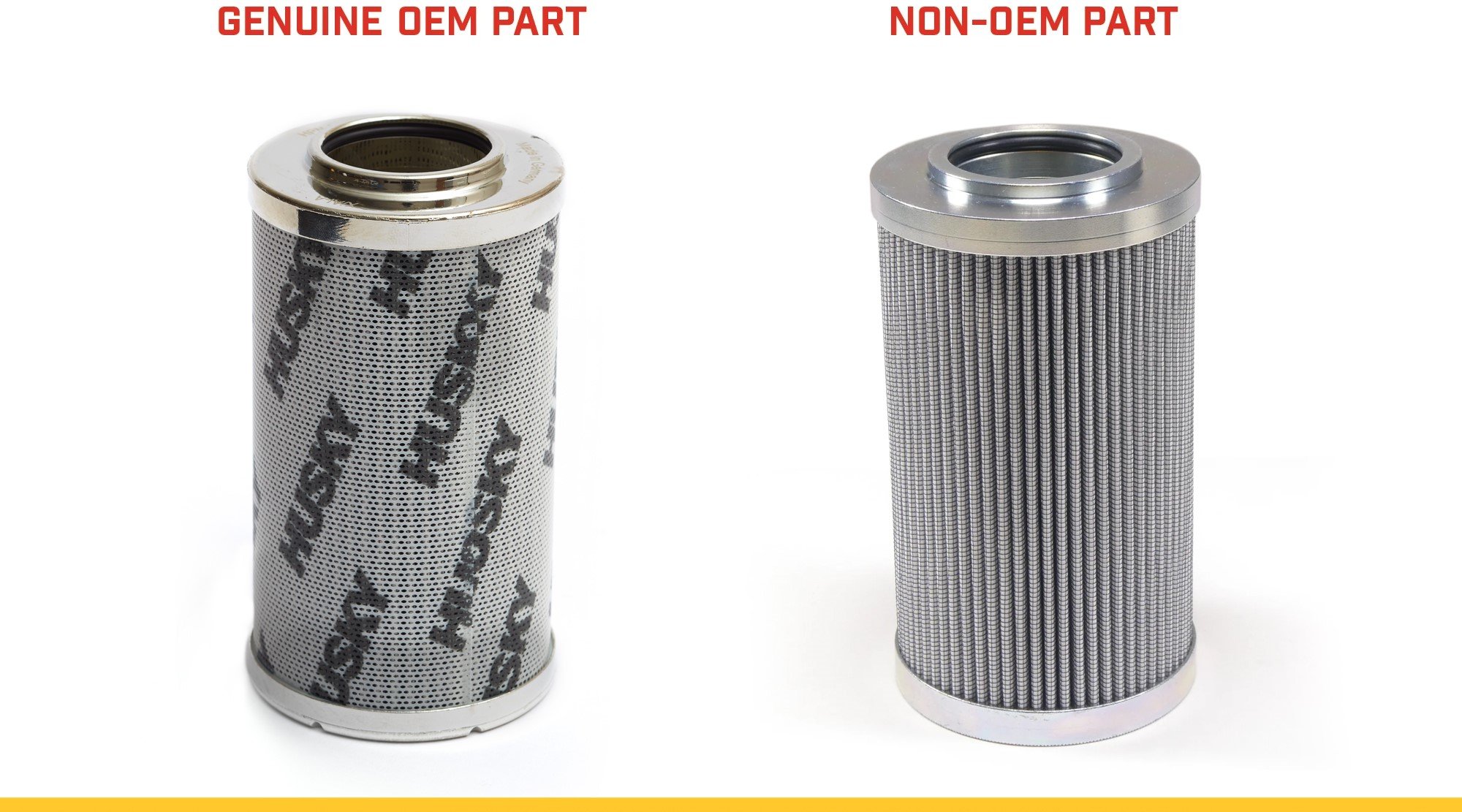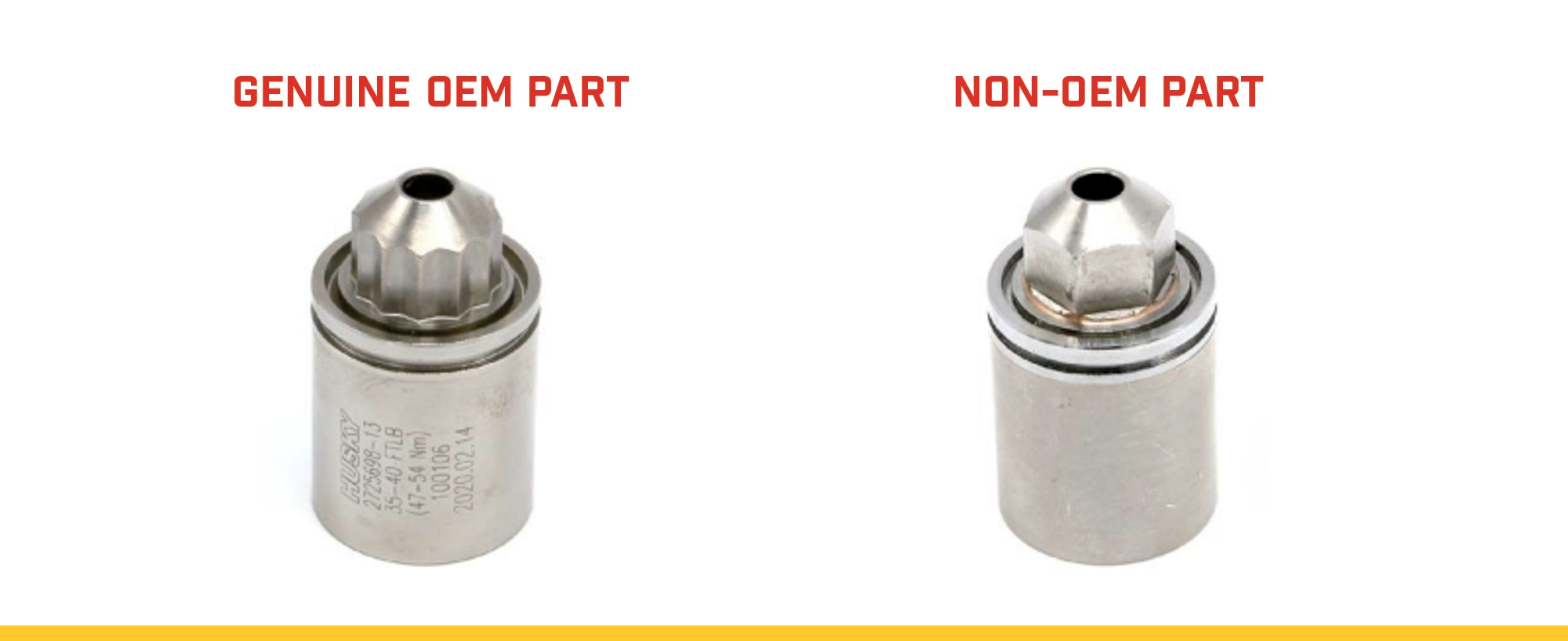Boosting Reliability and Efficiency: The Benefits of Genuine OEM Parts
Choosing to use genuine OEM parts is not just about maintaining your Husky system; it is a strategic decision that can future-proof your operations with components designed for excellence and backed by a commitment to quality and reliability.
In this blog post, we’ll look at the benefits of using genuine OEM parts, how you can spot non-OEM parts, and more.

What Are Genuine OEM Parts?
Genuine original equipment manufacturer (OEM) parts are components produced or specified and tested by the manufacturer that built the original equipment. Non-OEM or aftermarket parts, on the other hand, are produced by third-party manufacturers not affiliated with the original equipment.
While they may appear similar, genuine OEM and non-OEM parts can differ greatly when it comes to quality and reliability.
The Potential Risks of Using Non-OEM or Aftermarket Parts
Because they are specified and tested by the same manufacturer, genuine OEM parts are specifically crafted to meet the exact specifications of the machinery. In contrast, non-OEM parts may lack this precision and compatibility, causing a number of issues that can significantly impact operations.
Benefits of using genuine OEM parts include:
Frequent replacements and increased downtime
Without the precision of genuine OEM parts, non-OEM parts tend to succumb to wear and tear more rapidly. This can lead to more frequent replacements, causing machinery downtime and disrupting production schedules.
Performance issues
A lack of precision and compatibility can also cause various performance issues, such as machine alarms, plastic part quality defects, and increased cycle time, among others. These issues can collectively escalate into major disruptions, resulting in longer cycle times.
Impact on injection molding process
The often subtle variations in non-OEM parts can introduce unpredictability into the injection molding process, which can slow down production and affect the consistency of the final product.
Machine longevity issues
Non-OEM parts lack the meticulous design and rigorous testing that genuine OEM parts undergo. This disparity in quality and consistency can threaten the longevity of machinery, as components may fail prematurely or perform suboptimally.
Warranty implications
Using non-OEM parts may void warranties provided by the original equipment manufacturer. This not only exposes you to the financial risks of potential damages but also excludes you from the customer support that often comes with genuine OEM parts.

Although similar to a genuine OEM part, these non-OEM filters can have a shorter service life, compromise operational safety, increase the risk of system failure and ultimately increase lifecycle cost.
The Benefits of Using Genuine OEM parts
Selecting genuine OEM parts offers a myriad of advantages – from maintaining the quality of your machinery’s intricate components to the overall efficiency of your operations.
Benefits of using genuine OEM parts include:
Improved reliability through genuine fit
Manufacturers, like Husky, invest significantly in research and development (R&D), ensuring that each part is built to meet exact specifications, which provides an assurance of quality and reliability.
Enhanced performance
Genuine OEM parts seamlessly integrate with the machinery they are designed for, enhancing performance and reducing maintenance and downtime.
Lowest total cost of ownership
While non-OEM parts may initially appear cost-effective, they often translate into higher costs over time due to the aforementioned performance issues, frequent replacements, and potential equipment damage.
Warranty compliance and access to support and advisors
Using OEM parts will secure your system’s warranty. Husky, for example, offers a six-month warranty on parts, responsive solutions advisors, and a number of kits and services to optimize maintenance and repairs, including our Essential Parts Kits, Machine Preventative Maintenance Kits, and Hot Runner Preventative Maintenance Kits.
In addition, Husky’s OEM Parts Portal facilitates expedited online ordering, with over 70 thousand parts available, 24/7 availability, 9 global service centers, more than 100 dedicated parts professionals, over 240 global service technicians, and 1-day delivery to most locations.
How to Recognize a Non-OEM Part
Distinguishing between genuine OEM parts and their non-OEM counterparts is an essential skill to maintain the ongoing performance and reliability of your machinery.
Here are few steps you can take to help you identify a non-OEM part:
Check for part number engravings
Authentic OEM parts are marked with specific part numbers engraved by the manufacturer. Checking and cross-referencing part numbers can be a quick and effective method to verify authenticity.
Conduct a visual check
Non-OEM parts often have variations in shapes and materials compared to their genuine counterparts. A careful visual check can reveal discrepancies that may impact performance or longevity.

These hot runner nozzle tips are similar but not the same. A visual check reveals differences in shape, material and dimensions.
Verify the source
The origin of your parts is a key factor in determining their authenticity. Husky, for example, does not work with a reseller. Ordering from us, therefore, ensures you receive genuine OEM parts. Similarly, be cautious if the cost for replacement parts is below the typical market price, as it may indicate non-genuine components.
Measure your parts
While measuring mold or hot runner parts is not feasible, it is possible for many others. Where possible, take the time to measure your parts, as precise dimensions are a hallmark of genuine OEM parts. If measurements don't align with the specified standards, it's a red flag and can cause potential issues with the part's compatibility and performance.
By incorporating these checks into your maintenance and replacement processes, you add a layer of assurance that the parts you're using align with the original specifications.
Reach out to our experts to learn more about how we can enable you to future-proof operations with components designed for excellence and quality.